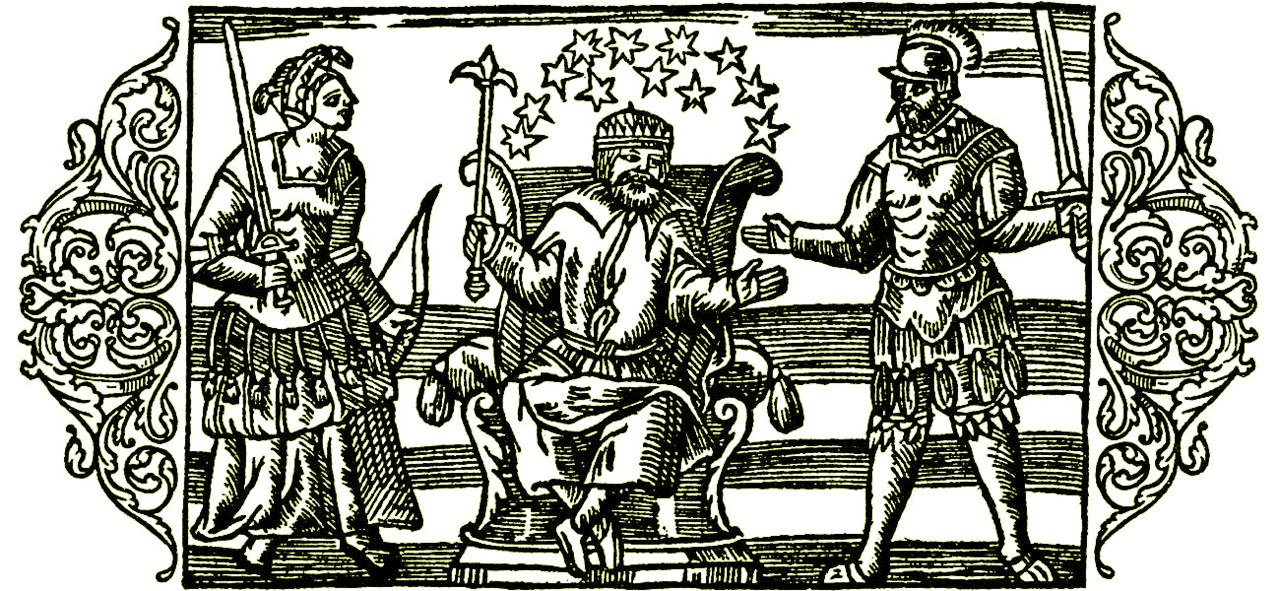The First ‘Viking’ Was A Bronze Age Man
Ellen Lloyd - AncientPages.com - The Vikings were feared, hated, and admired, and their rich history goes far back in time. Vikings changed the history of Europe, and their presence left a legacy in other parts of the world. How could they become so powerful and rich? How were they able to explore distant lands?
Credit: Stock Photo
We tend to associate Vikings with great names such as Ragnar Lodbrok, Ivar the Boneless, Erik the Red, and mighty King Harald Hardrada, just to mention a few. However, before these men became famous and influential, there was the Bronze Age that shaped the Nordic civilization and laid the foundation for the Viking Age.
Historical Studies Show The First Viking Was A Bronze Age Man
The Bronze Age was a fascinating period in Scandinavia and other parts of Europe. During this period, Norse people traded with foreign cultures and sailed to unknown lands. Influential leaders held a high status in society, and pagan gods who many believed controlled the fate of humanity were worshipped.
Around 1,600 B.C., people in northern countries quickly acquired a prominent place in Europe thanks to their trade with copper, the first metal used by ancient man more than 10,000 years ago.
Nordic people traveled all the way to the Alps and Germany to acquire copper that they transported to England in exchange for other precious metals they could bring back to their countries.
Norse deities played a vital role in society. To the left Frigg with sword and bow. In the middle Tor (Thor) with crown and spire sitting on a throne. To the right Oden (Odin) heavily armed. All these deities are encountered in Norse mythology. Credit: Public Domain
The business was booming and valuable trade contacts were established. The Norwegians played a central role in this continental trade and Jutland, a large peninsula containing Denmark's mainland regions, became the richest place in Europe. This sensational economic transformation occurred almost overnight because of trading with amber.
“I don't think the raw materials came to the Nordic countries step by step, it had become too expensive. The Norwegians must have gone a long way to get the copper, some from Central Europe, some from Spain. There are rock carvings in Portugal that are very similar to the Scandivaioan ones,” says Professor Johan Ling, at the Department of Historical Studies at the University of Gothenburg, who surveyed tens of thousands of Swedish carvings.
Trade And Colonization During The Bronze Age
The highly respected Nordic culture was undoubtedly founded on trade, but proper agriculture was also very important.
During this period, Norse people realized that investing in merchant's vessels, owning lands, trading, and looting could make them rich. This is how the Viking Age started, a period characterized by trade and colonization.
However, being a farmer could be difficult if a person doesn’t have enough land and livestock.
According to Professor Kristian Kristiansen at the Department of Historical Studies at the University of Gothenburg, Norse people created a “patrilineal society that the Indo-Europeans brought with them into Europe, where the eldest son inherits the farm. It is deeply embedded in Indo-European society and created a strong social dynamic. They also came up with a new shepherd and warrior culture, where there was the prestige of having a large herd of livestock.”
Kristiansen explained that “expansion of agriculture required unrestricted labor. If you didn't have much land, you couldn't afford to put fighters on boats. To manage agriculture and build boats for 20 people, 100 people were needed annually. This was probably not possible without slaves. During the Viking era, the vessels were considerably larger, and the need for labor increased to perhaps 250 people.”
Professor Ling explained that those who didn’t inherit large land areas gained power and wealth by becoming great warriors instead.
Boys were trained as warriors and were later sent to serve someone. In ancient times, the gender roles for boys and girls were quite defined. It was most common that boys worked on farms and girls to do housework.
Viking children at the age of 10 were considered adults and were required to learn the jobs and tasks that their parents did. The boys mainly worked on farms, and the girls worked inside like their mothers.
Viking boys were expected to learn how to take care of themselves. This meant they must be not only good farmers but also skilled warriors.
“It is a system created in the Bronze Age, where the men on the boats formed a war chest. This meant that there were basically two ways of gaining wealth: of land or of commerce and looting.
Many women came from outside, according to analyzes of remains in, among other things, Danish graves. The DNA and strontium analyses do not reveal where, only that they came from other regions. Boys were sent as foster children to an uncle's family, where they grew up with cousins and were trained in a continental network of warriors.
Gifts such as gold rings, positions of power, and women are important for alliances. It is important to be famous and remembered. The exchange of gifts is central even during the Viking era, as is evident in the Havamal life rules, but the system is formed in the Bronze Age. You see it on the rock carvings, which depict an exclusive elite with travel, hunting, and ritual matches,” Professor Ling explained.
During the Viking era, there were different classes of ships. The longships were mainly used as warships and the ships called Knarrs (or knorrs in Old Norse) served as slower passenger and cargo ships. Credit: Viking Armada by Edward Moran (1829-1901) Public Domain
One of the main reasons behind the Vikings' success in reaching distant lands lies in their remarkable longships. The Vikings’ ships were the European Dark Ages' greatest technical and artistic achievement. Without these great ships, the Viking Age would never have happened.
In a study conducted together with Professor Kristiansen and American archaeologist Timothy Earle, Professor Ling drew a comprehensive picture of the Nordic Bronze Age economy, social structures, and war ideology. The results of the study showed ships gave Norwegians power and wealth. Constructions of long-distance boats continued and played a vital role in the Vikings’ success abroad.
First version of this article was published on November 18, 2019
Written by - Ellen Lloyd – AncientPages.com
Copyright © AncientPages.com All rights reserved. This material may not be published, broadcast, rewritten or redistributed in whole or part without the express written permission of AncientPages.com
Expand for referencesMore From Ancient Pages
-
 British Columbia’s Mysterious Ancient Underground People Who Avoided Daylight And Owned Strange Magical Objects
Ancient Mysteries | Apr 6, 2025
British Columbia’s Mysterious Ancient Underground People Who Avoided Daylight And Owned Strange Magical Objects
Ancient Mysteries | Apr 6, 2025 -
 Gengen Wer – Goose God Who Guarded The Celestial Egg Containing The Life Force In Egyptian Beliefs
Featured Stories | Apr 22, 2021
Gengen Wer – Goose God Who Guarded The Celestial Egg Containing The Life Force In Egyptian Beliefs
Featured Stories | Apr 22, 2021 -
 Illuminated Ancient Manuscripts Reflect 1,000 Years Of Human History
Artifacts | Sep 12, 2015
Illuminated Ancient Manuscripts Reflect 1,000 Years Of Human History
Artifacts | Sep 12, 2015 -
 Meidum ‘Collapsed’ Pyramid Of Great Builder Pharaoh Snefru
Featured Stories | Jan 2, 2017
Meidum ‘Collapsed’ Pyramid Of Great Builder Pharaoh Snefru
Featured Stories | Jan 2, 2017 -
 Why Was Lovesickness A Feared Disease During The Middle Ages?
Ancient History Facts | Feb 8, 2018
Why Was Lovesickness A Feared Disease During The Middle Ages?
Ancient History Facts | Feb 8, 2018 -
 Only Apocalyptic Destruction Can Eliminate The Gap Between Rich And Poor – Historian Says
Featured Stories | Jun 6, 2018
Only Apocalyptic Destruction Can Eliminate The Gap Between Rich And Poor – Historian Says
Featured Stories | Jun 6, 2018 -
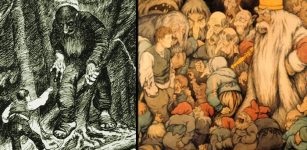 Trolls – Fascinating Mythical Creatures Of Scandinavia
Featured Stories | Jun 13, 2022
Trolls – Fascinating Mythical Creatures Of Scandinavia
Featured Stories | Jun 13, 2022 -
 Hina Matsuri Festival – Sending Dolls In Boats Into The Ocean To Celebrate Girl’s Day In Japan – Ancient Shinto Tradition
Ancient History Facts | Mar 3, 2025
Hina Matsuri Festival – Sending Dolls In Boats Into The Ocean To Celebrate Girl’s Day In Japan – Ancient Shinto Tradition
Ancient History Facts | Mar 3, 2025 -
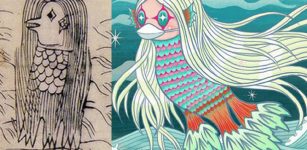 Yokai Amabie – Protective Ancient Spirit That Can Ward Off Epidemics
Featured Stories | Mar 30, 2020
Yokai Amabie – Protective Ancient Spirit That Can Ward Off Epidemics
Featured Stories | Mar 30, 2020 -
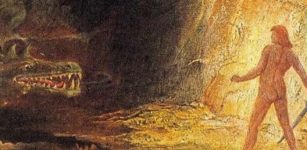 Sigurd Fafnirsbane – Legendary Dragon Slaying Warrior And His Magical Sword
Featured Stories | Oct 30, 2017
Sigurd Fafnirsbane – Legendary Dragon Slaying Warrior And His Magical Sword
Featured Stories | Oct 30, 2017 -
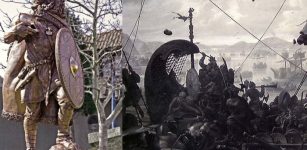 Kylfings – Unknown Warriors Mentioned On Norse Runes – Were They Members Of The Varangian Guard?
Civilizations | Mar 15, 2018
Kylfings – Unknown Warriors Mentioned On Norse Runes – Were They Members Of The Varangian Guard?
Civilizations | Mar 15, 2018 -
 Gunung Padang – Remarkable Megalithic Site In Indonesia
Civilizations | Jun 14, 2014
Gunung Padang – Remarkable Megalithic Site In Indonesia
Civilizations | Jun 14, 2014 -
 Strange Case Of The ‘Impossible’ Glove Remains Unexplained – The Discovery – Part 1
Featured Stories | May 24, 2019
Strange Case Of The ‘Impossible’ Glove Remains Unexplained – The Discovery – Part 1
Featured Stories | May 24, 2019 -
 Unorthodox Ancient ‘Out-Of-This World’ Carvings Were Found And Destroyed – Mysterious Labyrinth And Unknown Ruins – Part 2
Ancient Mysteries | Aug 13, 2020
Unorthodox Ancient ‘Out-Of-This World’ Carvings Were Found And Destroyed – Mysterious Labyrinth And Unknown Ruins – Part 2
Ancient Mysteries | Aug 13, 2020 -
 Geri And Freki: Two Wolves ‘Greedy’ And ‘Ravenous’ Were Loyal Companions Of Odin In Norse Beliefs
Featured Stories | Feb 8, 2019
Geri And Freki: Two Wolves ‘Greedy’ And ‘Ravenous’ Were Loyal Companions Of Odin In Norse Beliefs
Featured Stories | Feb 8, 2019 -
 Mysterious Balochistan Sphinx Has An Ancient Story To Tell – But Is An Advanced Ancient Civilization Or Mother Nature Hiding Behind The Story?
Featured Stories | Feb 3, 2018
Mysterious Balochistan Sphinx Has An Ancient Story To Tell – But Is An Advanced Ancient Civilization Or Mother Nature Hiding Behind The Story?
Featured Stories | Feb 3, 2018 -
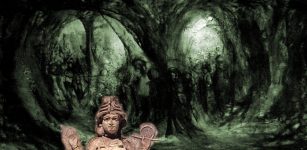 Death And Afterlife In Sumerian Beliefs
Civilizations | May 12, 2017
Death And Afterlife In Sumerian Beliefs
Civilizations | May 12, 2017 -
 Obscure History Of Skara Brae – Home To Dwarfs
Featured Stories | Apr 12, 2017
Obscure History Of Skara Brae – Home To Dwarfs
Featured Stories | Apr 12, 2017 -
 The Sistine Chapel Cypher – Secret Messages In The Art Of Michelangelo
Ancient Mysteries | Mar 3, 2018
The Sistine Chapel Cypher – Secret Messages In The Art Of Michelangelo
Ancient Mysteries | Mar 3, 2018 -
 Oklahoma’s Mysterious Hollow Hill – The Unexpected – Part 2
Ancient Mysteries | Jul 9, 2020
Oklahoma’s Mysterious Hollow Hill – The Unexpected – Part 2
Ancient Mysteries | Jul 9, 2020


